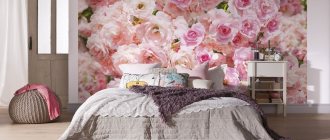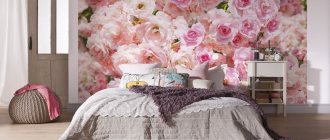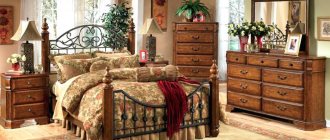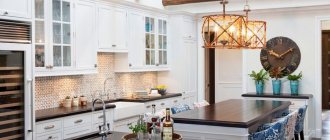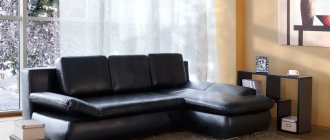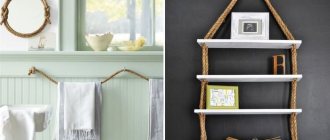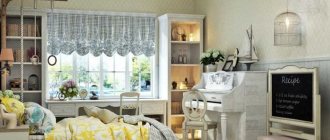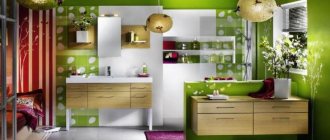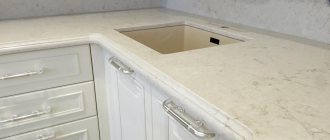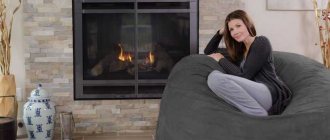Published: 04/21/2017 Artistic forging in the interior helps to change the design, saturate the overall composition with new notes or focus attention on a separate area of the room. Forged products were especially popular in the 18th-19th centuries, but even today the demand for them is steadily increasing.
A variety of elements can be used in the interior. Artistic forging products are very diverse and include many separate groups. Each of them has many unique features.
Types of structures
Items can be solid forged or made in parts. In the first case, they are distinguished by their impressive weight, are particularly durable and resistant to external influences. They have no weld seams.
In addition, the price for wrought iron furniture of solid construction is usually higher.
- If it is handmade, then it can be distinguished by its external features.
- This product may have small dents and the edges may be flattened.
- They are usually made to order.
- In this way it is possible to obtain unique products.
Manufacturing custom metal furniture has its advantages. For example, the buyer is not tormented by the question of where to buy forged furniture, he does not waste time searching for a suitable model, he can independently choose a design and realize his interesting ideas.
Each master is ready to provide a photo of forged furniture made by himself. Usually this is very delicate work, the products have a special design. In skillful hands, malleable metal takes on any bizarre shape.
DIY making
Exclusive forged jewelry can be ordered from a blacksmith's workshop, but it is expensive. To save money, you can try to make a decorative element from metal yourself. To do this, you need to choose a forging technology (hot or cold). The list of consumables, tools, and equipment will depend on your choice.
Preparing and drawing up a diagram
Before you start making a decorative product, you need to draw up a diagram. To do this, you need to draw individual details of the future product on a sheet of paper and cut them out along the contour. Next, you need to transfer the dimensions to metal blanks and cut them with a grinder.
Tools and materials
Forging tools are selected depending on the metal processing method. For hot forging:
- bending forks;
- sledgehammers, hammers of different weights;
- blacksmith's tongs;
- metalsmith's and blacksmith's chisels;
- steel undercuts;
- rolling, nailing;
- grinder, welding machine;
- metal brush, set of files;
- ironers, crimpers.
You will also need a forge. You can make it yourself from fireclay bricks. If the forge is in a private workshop, make it open and heat it with coke coal.
Tools, equipment for cold forging:
- Vices of different sizes.
- Welding machine.
- Grinder with discs.
- Drill with drills for metal.
- Gnutik is a manual machine for bending metal blanks at different angles.
- Volumetric - a device for creating three-dimensional images on metal surfaces.
- A twister is a device that can be used to twist several metal rods into one piece.
- A snail is a hand-held machine used to create spirals and twisted products.
- Wave is a device for creating patterns from metal strips and rods.
- Hydraulic Press.
To make decorative elements you will need fittings of different diameters, metal sheets, and strips.
Sledgehammer (Photo: Instagram / master_expert)
Manufacturing
Cold forging is a simple way to make decorative items. The method includes several stages:
- Preparing metal blanks, cutting them to the required sizes using a grinder.
- Giving parts the required shape using manual machines.
- Connecting individual metal elements to obtain a finished product. A welding machine is used for this.
The last stage of manufacturing an item using cold forging is cleaning the welds and coating the joints with an anti-corrosion compound.
Hot Forging Process:
- Creating a sketch, preparing metal blanks for heat treatment.
- Heating of workpieces to a certain temperature.
- Giving the workpiece the required shape.
- Creating bends.
If you don’t have a pyrometer, you can determine the heating temperature of the metal visually by monitoring changes in the shade of the surfaces.
What styles are they used in?
Forged products for the interior must be combined with the design of the room .
Geometric shapes and patterns are selected according to stylistic rules:
- Provence - thin leafy elements, flowers, branches made of metal;
- Rococo - refined lines with transitions into massive decorations;
- oriental style - wavy elements, leaves, tree branches, flowers, ornate weaves;
- Scandinavian style - strict geometric shapes with sharp corners;
- loft - straight lines, rough shaped details, minimal decor.
The color of the furniture should match the style. White, gray, black colors are suitable for Scandi. Pastel, light, delicate shades are good for Provence. Natural metallic colors and dark shades look harmonious in the loft style.
In the living room
Furniture decorates spacious living rooms, dining areas, and small rooms. Craftsmen make chairs, sofas, dining tables, and coffee tables from metal . An exclusive chandelier, whatnot, flower stand, clock or metal mirror with beautiful decor will complement the picture.
Wrought iron chairs in the interior
Armchairs with metal frames are installed in dining rooms, living rooms, and on terraces . They can complement sofa groups or be included in dining sets. The chairs are equipped with thin or massive armrests. Velvet, jacquard, leather, and suede are often used for upholstery. Fabrics with striped patterns and elegant prints are combined with forging.
Forged stairs
A vintage staircase with forged elements visually expands the space. Straight or L-shaped structures are installed in a small space A spiral staircase is suitable for a spacious hall . The design of the railings and steps is selected to match the style of the room.
In the bedroom
Forging in the bedroom interior looks elegant if you abandon all the usual furniture. Decor options can be seen in the photo of bedroom interiors with a wrought iron bed. Mirrors, dressing tables and bedside tables made of metal are installed in the sleeping area. For lighting, candlesticks, lamps, and sconces on openwork frames are used.
Forged bed in the interior
A bed for sleeping is selected taking into account three factors: the height of the owners, the size of the room, and design requirements.
The following types of beds with forging elements are popular:
- models with large headboard and footboard;
- high canopy designs for canopies;
- models with a filigree headboard on massive legs.
To decorate the bed, use light, plain textiles or thick fabrics with discreet patterns.
In the hall
Artistic forging in the interior of the hallway is original and functional . In the front room you can install a metal bench, a wall or floor hanger, a shoe rack, a table, and an umbrella stand. The designs can be supplemented with shelves, hooks for small items, and stands for phones.
In the kitchen
The dining area has sofas upholstered in leather on a metal base. Tables, shelves on the wall, and hanging metal organizers are suitable for decorating the kitchen area . To install hanging forged products, you need strong fasteners.
Forged partitions
For zoning, patterned partitions and other forged products in the interior are used. They unload space and have any shape . The metal is decorated with patina and painted with golden and silver paints.
Forged cornices in the interior
Blacksmiths make standard cornices, as well as designs with front or side decoration. They can be used to hang curtains made of heavy fabrics or fabrics made of several layers. Decorated cornices consist of strips, front or side patterns.
Forged clock in the interior
Decorative clock mechanisms are made of metal, wood, glass, and ceramic elements. Desktop models have a reliable stand. The body of the wall clock is decorated with patterns or designs.
Forged mirror in the interior
Mirrors with forged decor are installed on the floor or hung on the wall. Wall-mounted models are equipped with shelves. Floor mirrors have a stable frame. The stand allows you to change the angle of inclination while trying on clothes.
Fireplace and forging
Metal grates are used to decorate the fireplace insert. Forged elements are sometimes attached to the brick of the fireplace. A stand for utensils and a metal woodpile are installed nearby.
Advantages of forged products
Blacksmiths make furniture, hangers, fireplaces, wall decorations and other exclusive items. They can decorate any part of the apartment .
Forged products for home interiors have the following advantages :
- reliability, service life 80–100 years without restoration;
- elegance, attractiveness, exclusivity;
- variety of models, compatibility with different materials;
- versatility: suitable for rooms with any style;
- ease of maintenance and operation;
- moisture resistance, heat resistance.
Metal structures can withstand any impact, do not sag, or become loose from constant physical activity.
Screens and partitions
Vertical and horizontal decorative panels are suitable for making gates, gates, fences, and for dividing or enclosing space. This technique can be used not only in a private house, country house or estate, but also in an apartment - to, for example, visually demarcate a kitchen-living room or create zoning in a bedroom-office.
History of the use of forging in the interior
Decorative artistic forging originated in the Ancient World . The first blacksmiths made weapons. Even then, the craftsmen knew the main secrets and stages of artistic forging. Blacksmiths forged furniture, interior items, and jewelry. In the Middle Ages, rooms and facades were decorated with simple forging.
Since the 17th century, forged elements have become more refined. Railings, fences, and furniture are decorated with silhouettes of vases, flowers, and grapevines. This decor comes from the ancient Greeks. In the 17th–18th centuries, artistic metalwork was often used in the homes of famous people. For example, lattice fences with drawings framing the Romanov palaces. Such fences serve as examples of decorative forging.
